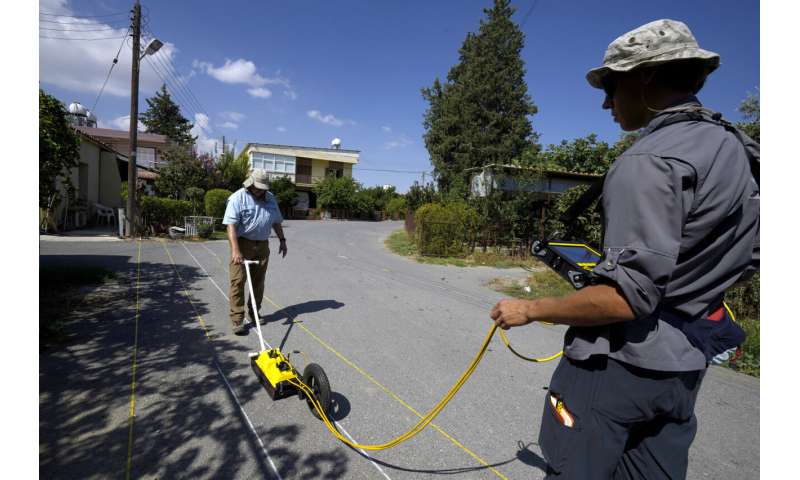The search for Cyprus’ missing goes high-tech as time weighs on loved ones waiting for closure
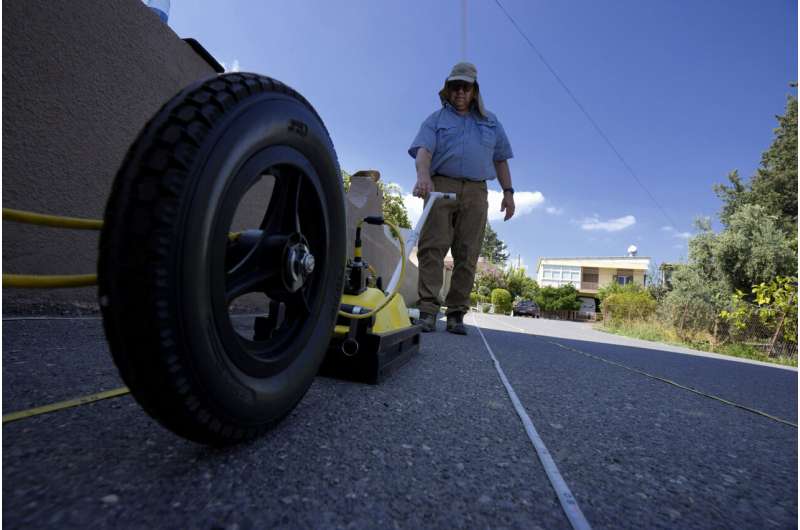
A bright yellow machine resembling a cross between a vacuum cleaner and a small scooter scrapes a narrow village road in Cyprus, working to solve a painful mystery from the divided island nation’s conflict-ridden past.
It uses radio waves to detect any disturbances in the layers of soil under the asphalt—potential evidence that could support eyewitness accounts of a mass grave containing remains of people who vanished nearly a half-century ago.
Cyprus’ Committee on Missing Persons is testing the pulseEkko—a deep ground penetrating radar—to help locate the remains of hundreds of Greek Cypriots and Turkish Cypriots who disappeared in the clashes during the 1960s and the 1974 Turkish invasion.
Since then, the island has been divided along ethnic lines, with the breakaway Turkish Cypriot north separated from the Greek Cypriot south where the internationally recognized government is located.
The radar is working against time as many witnesses to the violent events are no longer living. It is also one of the few remaining slivers of hope for the relatives of the missing—like Sophia Stavrinou.
Her father was last seen on Aug. 14, 1974, when he and fellow Greek Cypriot soldiers retreated from a massive Turkish military advance. The remains of soldiers who were with Stavrinou’s father that day have been found and returned to their relatives. But not those of her father.
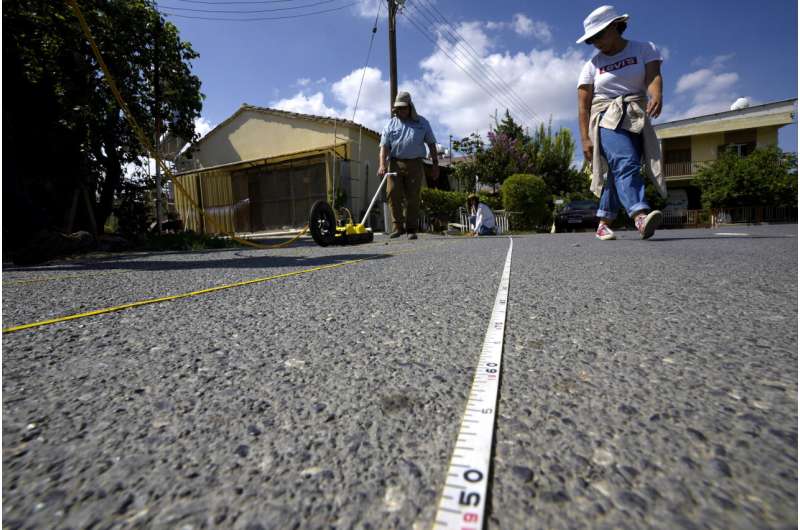
“There’s hope,” she said. “To be honest, I don’t know if it will happen.”
The committee, comprised of a Greek Cypriot, a Turkish Cypriot and a rotating member appointed by the United Nations, is looking to use the high-tech gear to help save both time and money in the search.
Bruce Koepke, special assistant to the committee’s U.N.-appointed member, says the machinery is expensive but that it’s worth investing in the radar.
“Witnesses are dying, so we need to use this technology,” he said.
On the breakaway Turkish Cypriot side of the island, in the village of Exo Metochi, or Düzova in Turkish, the radar is busy collecting images from below ground along a road squeezed between a two-story home and a fig orchard.
Harry M. Jol, a geography and anthropology professor at the University of Wisconsin-Eau Claire, which owns the pulseEkko, says that subsequent computer analysis of the images could reveal soil “anomalies,” possibly caused by digging for a burial site.
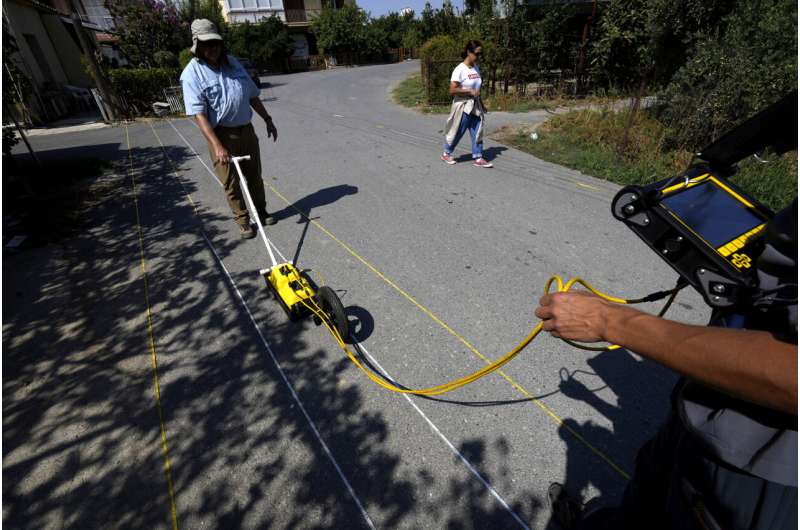
Pinpointing such anomalies could then help divert resources to “promising” sites instead of costly and time-consuming excavations that may yield no results, Jol told The Associated Press.
“If you can look down at a depth of a meter” in the images the radar collected, “that could be a year’s worth of excavation work,” said Jol, a Canadian citizen who is volunteering on the project in Cyprus together with his son and assistant Connor.
The two were looking at four sites in Cyprus over a week’s time, with the committee only covering their travel expenses and accommodations.
Yagmur Erbolay, a committee investigation coordinator, said an earlier dig at the orchard site abutting the road found nothing. But a second search was launched using the pulseEkko after consistent eyewitness accounts indicated several Greek Cypriots could be buried there.
For Jol, it’s the second time he has traveled to Cyprus to test out the radar.
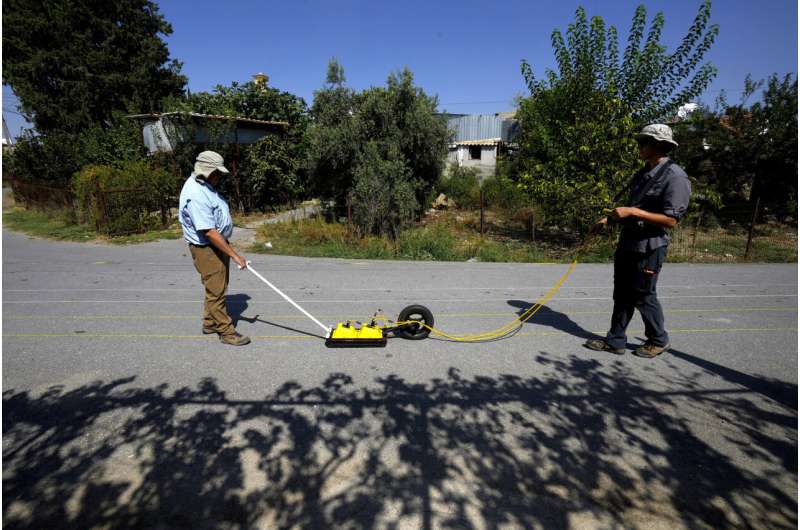
A trip last year produced few tangible results, but now they are using a more powerful version of the radar, which can probe deeper into the ground.
If proven effective, it could convince the committee to purchase its own machinery.
“We’re still testing the equipment and once the determination is made, the committee will meet to decide on whether to purchase the equipment,” said Koepke.
Of the 2,002 people who disappeared in Cyprus between 1963 and 1974, the remains of 1,033 have been identified and returned to their families since search efforts began in earnest in 2006.
That marks the second-best success rate in the world, after the former Yugoslavia, where thousands disappeared during the ethnic wars in the 1990s that accompanied the country’s breakup, according to Paul-Henri Arni, the committee’s outgoing U.N.-appointed member.
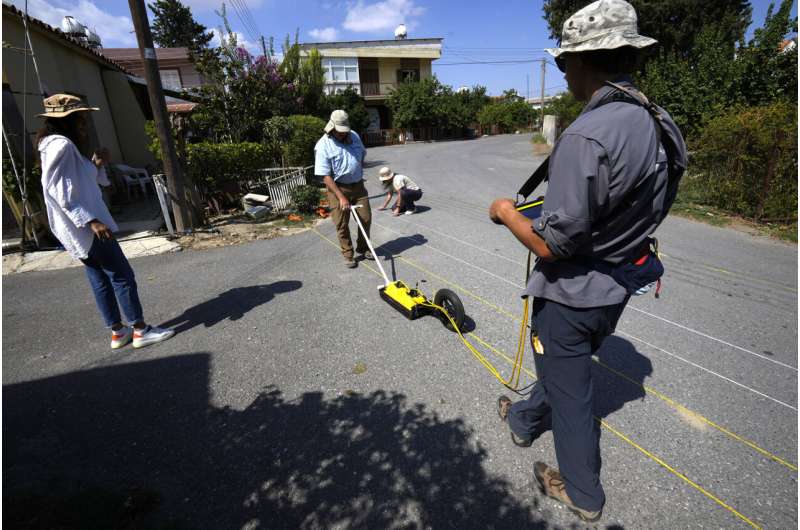
Deciphering the fate of those still missing—769 Greek Cypriots and 200 Turkish Cypriots—is a huge challenge.
“Now we have the hard cases when somebody was killed in one location, taken in a pickup truck 20 kilometers (12 miles) away and buried without (a) witness in a second location,” Arni told reporters last week.
With imprecise and less-than-reliable information on burial sites, technology is seen as key to expediting excavations by ruling out areas where there’s little or no evidence of soil disturbances.
New technology, such as GPR, can pinpoint the search for potential grave sites where the topography has changed significantly from how witnesses remember them, said Nikos Sergides, president of the Organization of Relatives of the Missing.
“We hope that any new technology that’s employed can expedite the process and that’s more important to relatives now than ever,” Sergides told the AP.
-
![The search for Cyprus' missing goes high-tech as time weighs on loved ones waiting for closure]()
Harry M. Jol, left, a geography and anthropology professor at the University of Wisconsin Eau Claire, and his son Connor, right, operate a ground-penetrating radar in the village of Exo Metochi, Duzova, in the Turkish occupied area at breakaway Turkish Cypriot north of ethnically divided Cyprus on Tuesday, Sept. 5, 2023. Emitting radio waves, the machine is probing for any disturbances through layers of soil beneath the asphalt to offer any clues supporting eyewitness accounts that people who vanished nearly a half century ago are buried in a makeshift mass grave, now squeezed between a two-story home and a fig orchard. Credit: AP Photo/Petros Karadjias
-
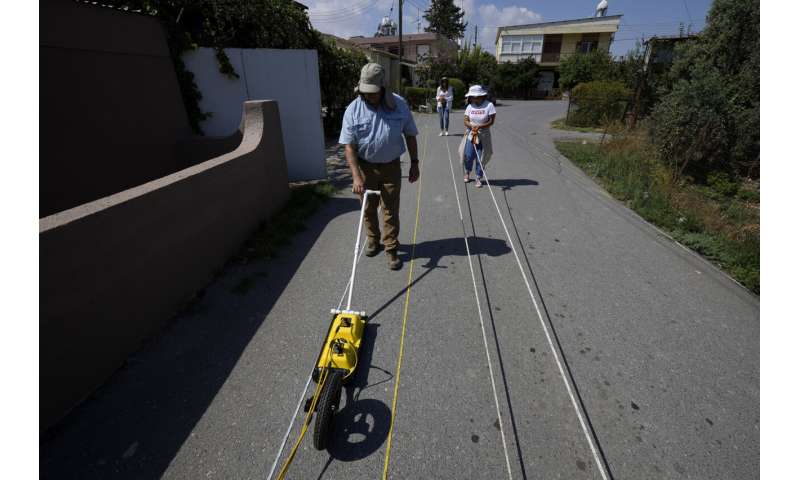
Harry M. Jol, left, a geography and anthropology professor at the University of Wisconsin Eau Claire, operates a ground-penetrating radar in the village of Exo Metochi, Duzova, as CNP staffers work together, in the Turkish occupied area at breakaway Turkish Cypriot north of ethnically divided Cyprus on Tuesday, Sept. 5, 2023. Emitting radio waves, the machine is probing for any disturbances through layers of soil beneath the asphalt to offer any clues supporting eyewitness accounts that people who vanished nearly a half century ago are buried in a makeshift mass grave, now squeezed between a two-story home and a fig orchard. Credit: AP Photo/Petros Karadjias
Testing the pulseEkko is key for the committee, which relies on international donations to support its 3.2 million euro budget ($3.4 million), mostly funded by the European Union.
Jol, who participated in searches for Holocaust victims in Latvia, said the technology could be a game-changer for burial sites in other former conflict zones.
The whole point of his work, Jol said, is to offer closure to the families of the missing by “working myself out of a job.”
© 2023 The Associated Press. All rights reserved. This material may not be published, broadcast, rewritten or redistributed without permission.
Citation:
The search for Cyprus’ missing goes high-tech as time weighs on loved ones waiting for closure (2023, September 11)
retrieved 17 September 2023
from https://techxplore.com/news/2023-09-cyprus-high-tech-closure.html
This document is subject to copyright. Apart from any fair dealing for the purpose of private study or research, no
part may be reproduced without the written permission. The content is provided for information purposes only.
For all the latest Technology News Click Here
For the latest news and updates, follow us on Google News.


